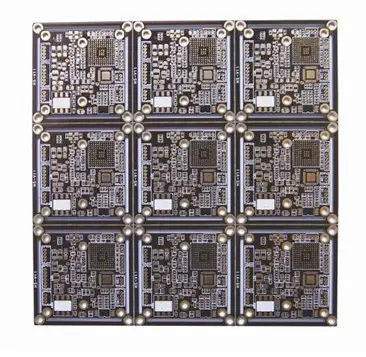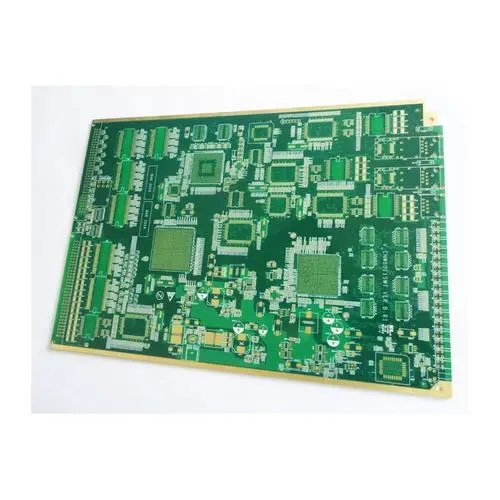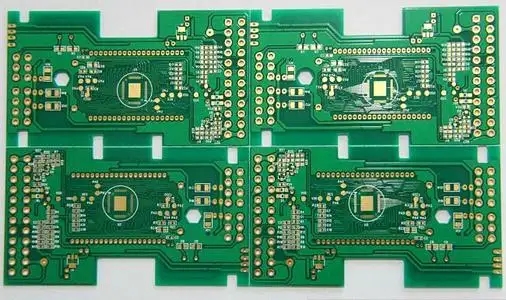
Rogers RF boards Rogers RO4350B and RO4835 and how to make RF boards
PCB manufacturer, PCB designer and PCBA manufacturer explain Rogers RO4350B and RO4835 high-frequency boards and how they are made
RogersRO4350B (Rogers high-frequency plate) hydrocarbon ceramic and RogersRO4835 (Rogers high-frequency plate) hydrocarbon ceramic are both materials of RO4000 series and belong to civil series. RO4000 series are hydrocarbon resin and ceramic filler laminate materials, which are compatible with FR4 mixed pressure, FR-4 processing technology, and lead-free welding technology, ensuring that Rogers high-frequency plate processing plant only needs to have lower processing capacity, reduce customers' Rogers high-frequency plate processing costs, and its low loss (dielectric loss (Df) 0.0037@10GHz ), better temperature stability of dielectric constant (50ppm/° C@-50 ° Cto150 ° C), better heat treatment capability (heat dissipation coefficient 0.6W/m/° K) than traditional PTFE materials, and low Z-axis thermal expansion coefficient (31ppm/° C) to improve the reliability of through-hole, which can ensure the excellent electrical performance required by the radar front-end and antenna at 24GHz. It is also a UL94V-0 flame retardant material, which further contributes to the safety of the radar system.
The biggest difference between the two is that RogersRO4835 is added with antioxidant, which is 10 times higher than that of traditional thermosetting materials, and meets the requirements of IPC-4103 (Specification for Base Materials for High Speed and High Frequency). Rogers high-frequency microwave RF plate RO4835 has added anti-oxidation material, and its anti-oxidation property is stronger than Rogers RO4350B. In addition to the difference between Dk and Df, the temperature characteristics of products with glass cloth are relatively poor, requiring high temperature range of products. The coefficient of thermal expansion becomes worse, especially for the z-axis, and the number of product layers will decrease. The phase characteristic of high frequency is relatively poor, and the products with strict requirements on phase should be avoided. The advantage is that the dimensional stability, hardness and water absorption of the product are relatively good.

The working frequency of the 24G security radar system is 24 ~ 24.25GHz, with a total working bandwidth of 250MHz. The FMCW waveform is used to work. Due to its high frequency and short wavelength, the RF front-end and antenna of the radar system can only use high-frequency microwave materials. The security industry is full of competition, which makes the high-frequency microwave materials not only have good performance, but also have moderate price, That is to say, high frequency microwave materials with high cost performance ratio are needed.
ROGERS, the internationally famous manufacturer and R&D manufacturer of high-frequency microwave RF board materials, focuses on the introduction of RogersRO4350B (Rogers RF board) hydrocarbon ceramics and RogersRO4835 hydrocarbon ceramics for the 24G security radar market in different use scenarios.
How to make high-frequency board
High frequency plate is a polymer compound polymerized from tetrafluoroethylene. Its structural formula is - [- CF2-CF2 -] n -, which has excellent chemical stability Corrosion resistance (PTFE or F4 for short, is one of the most corrosion-resistant materials in the world today, "the king of plastics" It is the common name of polytetrafluoroethylene (PTFE), which is a kind of plastic with the best corrosion resistance. It is not corroded by known acids, alkalis, salts and oxidants, and even the most powerful aqua regia can do nothing about it. Therefore, it is named Plastic King. Except molten metal sodium and liquid fluoride, it is resistant to all other chemicals, and is widely used in a variety of applications that require resistance to acids, alkalis and organic solvents, sealing, high lubrication, non adhesion, electrical insulation, good anti-aging resistance, and excellent temperature resistance (it can work at a temperature of+250 ℃ to - 180 ℃ for a long time).
Polytetrafluoroethylene (PTFE), as a high-frequency board material, is not toxic to humans, but ammonium perfluorooctanoate (PFOA), one of the raw materials used in the production process, is considered to have carcinogenic effect.
The temperature is - 20~250 ℃ (- 4~+482 ° F), and sudden cooling and heating, or alternating cold and hot operation are allowed.
Pressure - 0.1~6.4Mpa (full negative pressure to 64kgf/cm2) (Fullvacuum to 64kgf/cm2)
It has solved many problems in the fields of chemical industry, petroleum, pharmacy, etc. High frequency plate, PTFE seal, gasket PTFE seals and sealing washers are made of suspension polymerized PTFE resin by molding. Compared with other plastics, polytetrafluoroethylene has the characteristics of chemical corrosion resistance. It has been widely used as a sealing material and filling material.
Its complete thermal decomposition products at about 500 ℃ include tetrafluoroethylene, hexafluoropropylene and octafluorocyclobutane, which will decompose into highly corrosive fluoride gas at high temperature.
Tetrafluoroethylene plate is applicable to the temperature of - 180 ℃~+250 ℃. It is mainly used as electrical insulation materials and linings in contact with corrosive media, supporting sliders, track seals and lubricating materials. Rich cabinet furniture uses it in light industry and widely used as anti-corrosion lining materials for containers, storage tanks, reactor bottoms and large pipelines in chemical, pharmaceutical and dye industries; Aviation, military and other heavy industries; Machinery, construction, traffic bridge slider, guide rail; Anti sticking materials for printing and dyeing, light industry, textile industry, etc. PCB manufacturers, PCB designers and PCBA manufacturers will explain Rogers RO4350B and RO4835 high-frequency boards and how they are made.






